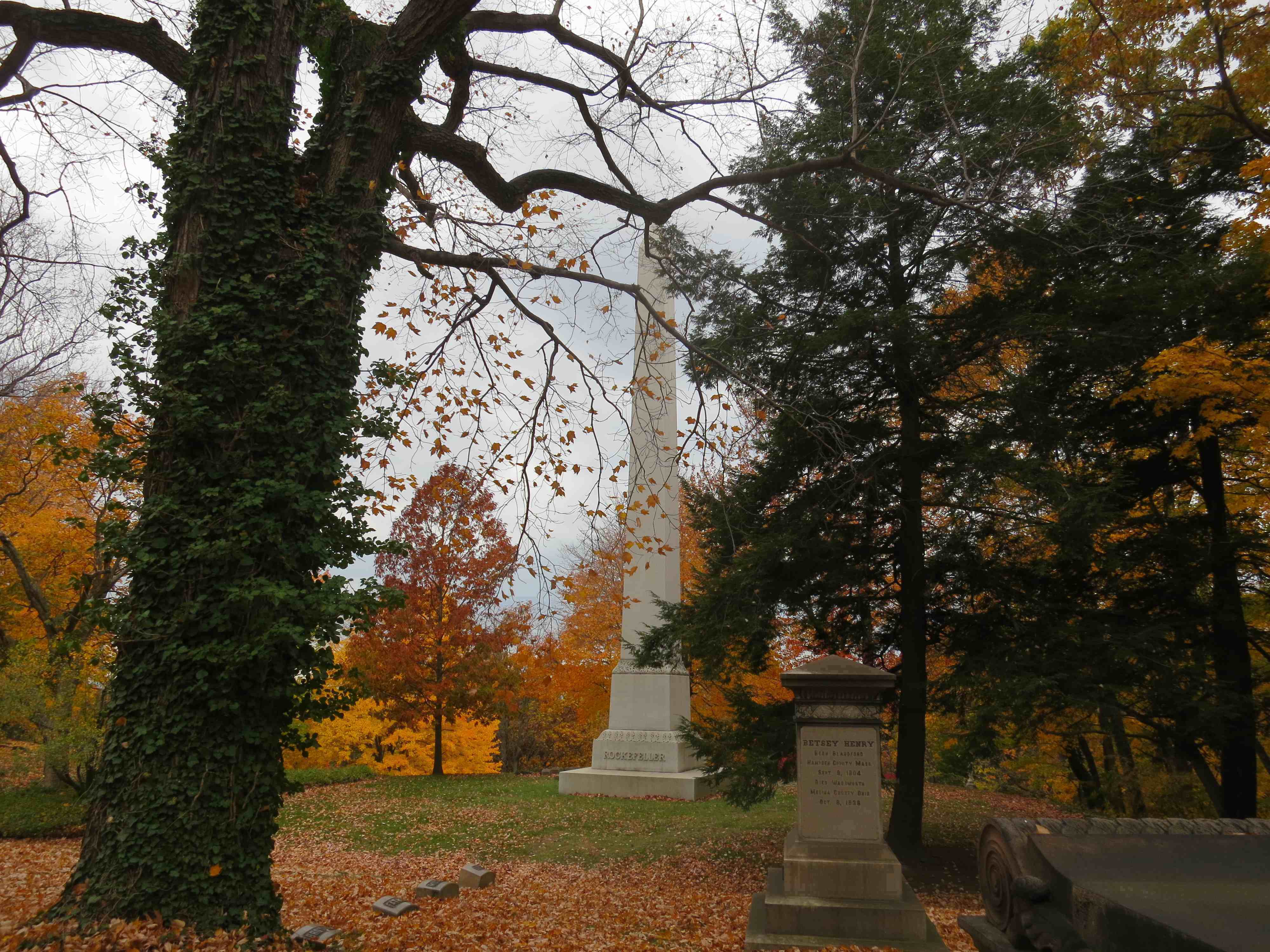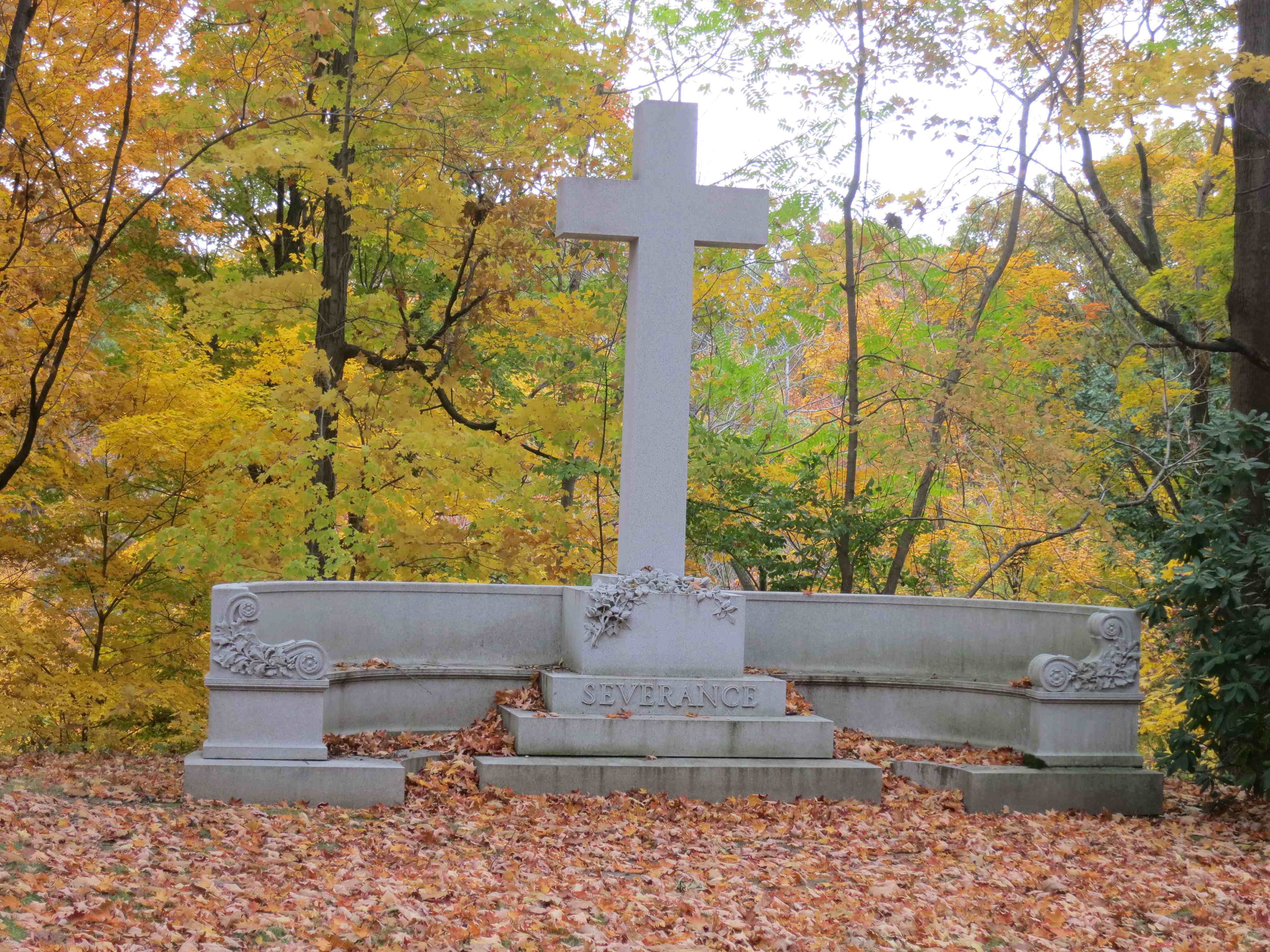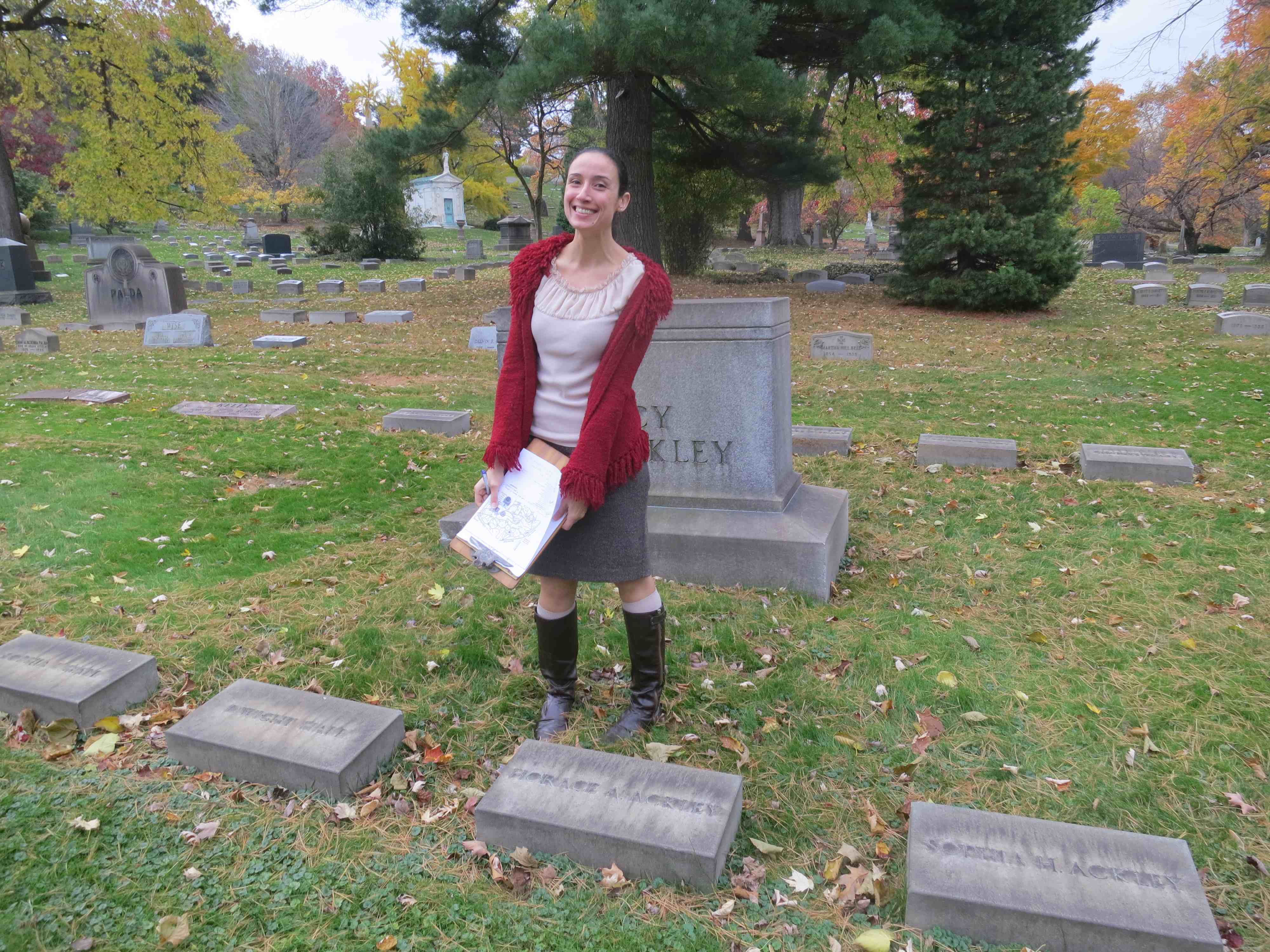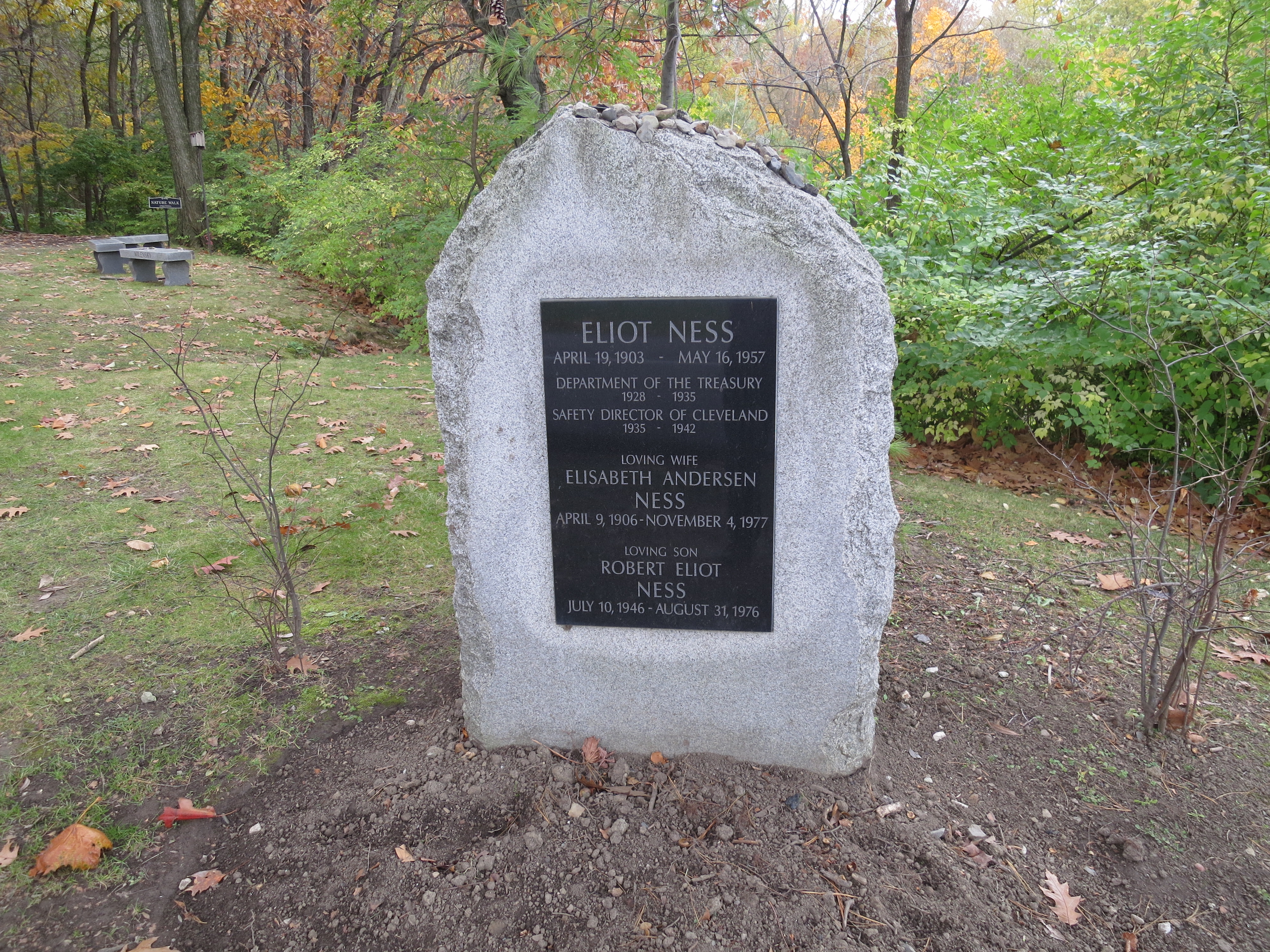 We’ve spent the last few posts describing the famous–and the infamous–body snatching incidents of our local, regional, and national past. What better way to follow up all that grave-robbing that with a Halloween post about our favorite Cleveland “graveyard”: The Lakeview Cemetery.
We’ve spent the last few posts describing the famous–and the infamous–body snatching incidents of our local, regional, and national past. What better way to follow up all that grave-robbing that with a Halloween post about our favorite Cleveland “graveyard”: The Lakeview Cemetery.
But what is a graveyard? And is it the same thing as a cemetery? The words are often  used interchangeably, but there are historical reasons for the shift in terminology. Traditionally, the green space or yard area surrounding a church housed the graves of its parishioners, thus a grave-yard. But by the late 18th century, many of these areas were full. Add to that an increasing secularization and a desire to make the grave-site a “final resting place” of more park-like appearance, and you have the impetus for change. The word “cemetery” comes from the Greek word koimētērion ‘dormitory’, from koiman ‘put to sleep’ [1]. It was originally applied to the Roman
used interchangeably, but there are historical reasons for the shift in terminology. Traditionally, the green space or yard area surrounding a church housed the graves of its parishioners, thus a grave-yard. But by the late 18th century, many of these areas were full. Add to that an increasing secularization and a desire to make the grave-site a “final resting place” of more park-like appearance, and you have the impetus for change. The word “cemetery” comes from the Greek word koimētērion ‘dormitory’, from koiman ‘put to sleep’ [1]. It was originally applied to the Roman  catacombs, but became increasingly used to describe the new burial grounds. Here in Cleveland’s Lakeview Cemetery, we see some of their best features: beautiful trees and plantings, natural elements like hillsides and streams, and a general sense of peace and calm in nature. Even so, some of the people buried here were quite lively characters in their lifetimes, including Dr. Horace Ackley (1810-1859), who appeared in last week’s post for, let’s say, “borrowing” a pauper’s body for dissection purposes.
catacombs, but became increasingly used to describe the new burial grounds. Here in Cleveland’s Lakeview Cemetery, we see some of their best features: beautiful trees and plantings, natural elements like hillsides and streams, and a general sense of peace and calm in nature. Even so, some of the people buried here were quite lively characters in their lifetimes, including Dr. Horace Ackley (1810-1859), who appeared in last week’s post for, let’s say, “borrowing” a pauper’s body for dissection purposes.
 Speaking of Horace, here he is just in front of me (at right; Brandy Schillace). Dr. Ackley’s career was remarkable and anything but dull. Co-founder and first professor at the Cleveland Medical College (which later became Medical Department of Western Reserve College and eventually Case Western Reserve University School of Medicine), the first physician to use ether for surgical anesthesia in Northern Ohio, and the “father” of the Northern Ohio Insane Asylum, Ackley personally combated and contained an outbreak of Asiatic cholera in Sandusky in 1849 (2). He was also responsible for stealing bodies (on one occasion, a “body” turned out to by quite alive but very drunk), for attacking a bank with a sledgehammer when they refused to pay back his money, and for an urban legend that suggests he *might* have shot one of his patients. (Not that seriously, mind. But still).
Speaking of Horace, here he is just in front of me (at right; Brandy Schillace). Dr. Ackley’s career was remarkable and anything but dull. Co-founder and first professor at the Cleveland Medical College (which later became Medical Department of Western Reserve College and eventually Case Western Reserve University School of Medicine), the first physician to use ether for surgical anesthesia in Northern Ohio, and the “father” of the Northern Ohio Insane Asylum, Ackley personally combated and contained an outbreak of Asiatic cholera in Sandusky in 1849 (2). He was also responsible for stealing bodies (on one occasion, a “body” turned out to by quite alive but very drunk), for attacking a bank with a sledgehammer when they refused to pay back his money, and for an urban legend that suggests he *might* have shot one of his patients. (Not that seriously, mind. But still).  Colorful and fascinating stories lie behind many of Cleveland’s medical professionals, making each grave marker a kind of touchstone for rich and varied lives. And that’s hardly all Lakeview has to offer. Did you know Rockefeller is buried here? And Elliott Ness? There’s more to tell and more to see, proving that a place doesn’t have to be “haunted” to tell stories–or to stir the soul.
Colorful and fascinating stories lie behind many of Cleveland’s medical professionals, making each grave marker a kind of touchstone for rich and varied lives. And that’s hardly all Lakeview has to offer. Did you know Rockefeller is buried here? And Elliott Ness? There’s more to tell and more to see, proving that a place doesn’t have to be “haunted” to tell stories–or to stir the soul.
On November 1st, the Dittrick staff will be leading a tour around the cemetery. It’s a revival of tours given a number of years ago, and we hope to make it a twice yearly occurrence. I hope you will join us in the future–and in the meantime, visit the Dittrick online “tour” for more (or print the map and take a tour yourself!)
REFERENCES
[1] “cemetery, n.” OED Online. Oxford University Press, September 2014. Web. 31 October 2014. [2] “Horace Ackely” Lakeview Cemetery. Dittrick Museum of Medical History. Web. 31 October 2014
